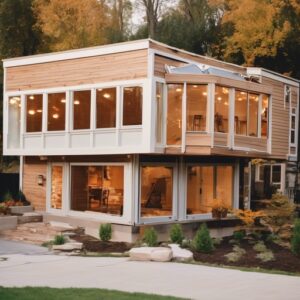Expanding your home with an addition can be an exciting endeavor, offering increased space, functionality, and value to your property. In the state of Maryland, where housing demands often outpace supply, adding a home addition can be a wise investment. However, navigating the process can seem daunting without proper guidance. Fear not! In this comprehensive guide, we’ll walk you through the steps to successfully add a home addition in Maryland.
Part 1: Planning Your Home Addition
Define Your Goals: Begin by clearly defining your objectives for the home addition. Are you looking to add extra living space, create a home office, or perhaps build a guest suite? Understanding your needs will help shape the design and scope of the project.
Set a Budget: Determine how much you’re willing to invest in the home addition. Consider factors such as construction costs, permits, design fees, and any unexpected expenses that may arise during the process. It’s essential to establish a realistic budget to guide your decision-making.
Consult with Professionals: Engage the expertise of architects, designers, and contractors to help bring your vision to life. These professionals can provide valuable insights, advise on zoning regulations, and ensure that your home addition complies with local building codes.
Part 2: Understanding Zoning Regulations and Permits
Research Zoning Laws: Before proceeding with your home addition, familiarize yourself with the zoning regulations in your area. Each county in Maryland may have its own set of rules governing property development, including setback requirements, lot coverage limits, and height restrictions.
Obtain Necessary Permits: Once you’ve finalized your design plans, obtain the required permits from your local jurisdiction. Depending on the scope of your project, you may need building permits, zoning variances, or environmental approvals. Failure to secure proper permits can result in costly delays and legal issues down the line.
Part 3: Designing Your Home Addition
Work with an Architect or Designer: Collaborate with professionals to design a home addition that seamlessly integrates with your existing structure and meets your aesthetic preferences. Consider factors such as architectural style, materials, and energy efficiency during the design phase.
Consider Structural Integrity: Ensure that the structural integrity of your home addition is sound. Factors such as soil conditions, foundation type, and load-bearing walls must be carefully evaluated to prevent structural issues in the future.
Incorporate Sustainable Features: Embrace eco-friendly design principles by incorporating sustainable features into your home addition. This may include energy-efficient windows, insulation, solar panels, or rainwater harvesting systems, reducing your environmental footprint and utility costs over time.
Part 4: Construction and Implementation
Hire Reputable Contractors: Select experienced contractors with a proven track record of delivering quality workmanship. Obtain multiple quotes, check references, and ensure that the contractors are properly licensed and insured.
Establish a Timeline: Work with your contractors to establish a realistic timeline for the construction process. Factor in potential delays due to weather, material shortages, or unforeseen complications to avoid frustration and disappointment.
Monitor Progress Closely: Stay actively involved in the construction process by regularly monitoring progress and addressing any concerns or deviations from the original plan promptly. Effective communication with your contractors is key to ensuring a successful outcome.
Conclusion
Adding a home addition Maryland can be a rewarding endeavor, providing additional space and functionality to accommodate your evolving needs. By following the steps outlined in this comprehensive guide, you can navigate the process with confidence and turn your vision into reality. Remember to plan diligently, adhere to zoning regulations, collaborate with professionals, and prioritize quality craftsmanship throughout the construction process. With careful planning and execution, your home addition will not only enhance your living experience but also increase the value of your property for years to come.


